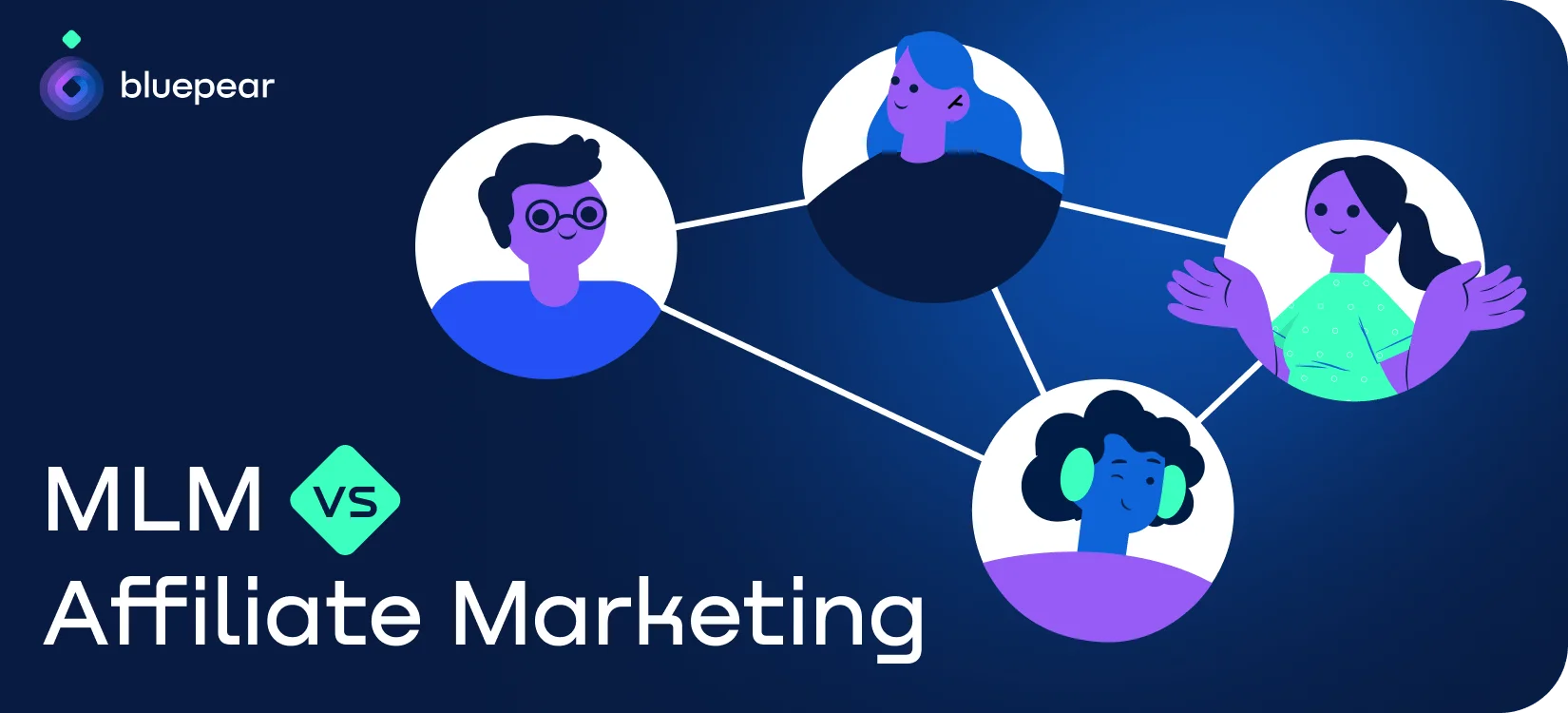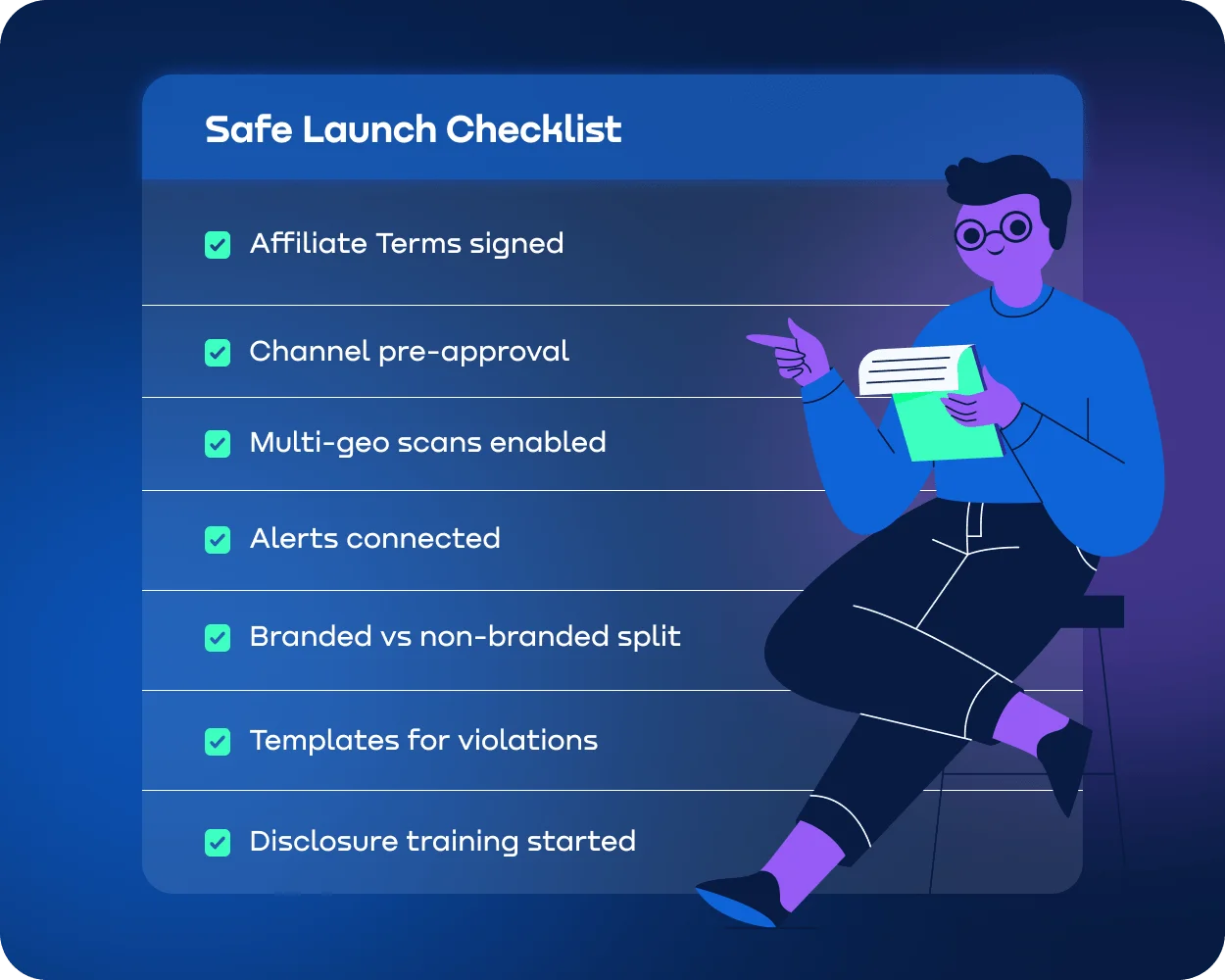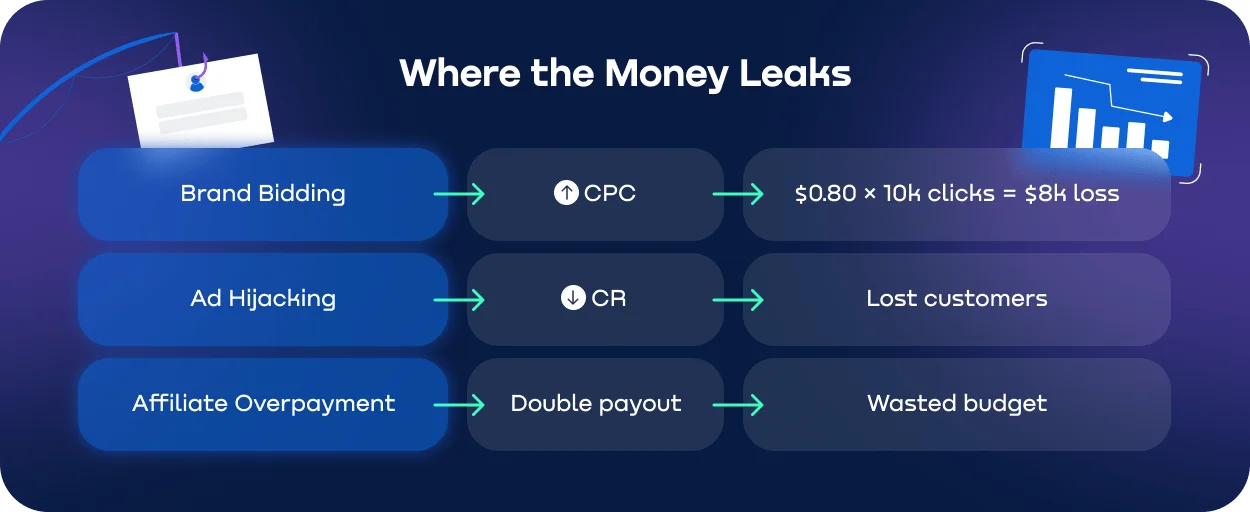
Contents
In the past few years, a lot of brands have moved from a multi-level marketing (MLM program) to an affiliate one. It's easy to see why there is a rivalry in affiliate marketing vs. MLM: affiliate marketing risks can scale in days across multiple GEOs. MLM program risks scale more slowly due to tighter central control. Affiliate programs are easier to run, partners can see what's going on, and they have other regulatory risk than MLM. Affiliates seem like the next logical step for marketing teams that want to grow. The switch, on the other hand, also modifies the way you have to follow the rules. Affiliate programs let in dozens or even hundreds of independent partners, whereas MLM strictly controls brand messaging. That freedom gives you more options, but it also makes you more vulnerable in affiliate marketing vs. MLM. If you don't actively manage your brand, brand bidding on search, ad hijacking in paid campaigns, coupon abuse on deal sites, typosquatting domains, cookie stuffing, and bad disclosure procedures can all lower the value of your brand and squander your ad money.
This article compares affiliate marketing vs. MLM. We will give you a useful checklist for securely starting (or moving from MLM to) an affiliate program, and a clear picture of how to set up monitoring and enforcement from the start.
Affiliate Marketing vs. MLM: Why the Risk Profile Changes
Switching from an MLM program to an affiliate program entails giving partners additional ways to join and more reasons to "piggyback" on your brand's traffic. The hazards are higher, but so is the scale.
New threats to look out for in affiliate marketing vs. MLM:
-
• Brand bidding. This is when affiliates buy your brand keywords in search engines and drive up your own acquisition prices.
-
• Ad hijacking occurs when partners copy your ads and redirect traffic to brand sites from their own IDs. So, they can get your commissions.
-
• Coupon abuse. There are unapproved coupon sites that promise discounts that don't exist, hurting trust and sales.
-
• Typosquatting is when domains with misspelled brand names get traffic by mistake.
-
• Cookie stuffing is when you drop cookies without really clicking on them to get "last click" attribution. Both cloaking and cookie stuffing are common cases of affiliate fraud detection in modern programs.
-
• Disclosure risks: affiliates not marking advertising or content as sponsored, which might place your business at risk of breaking the law.
All these tricks can be controlled with the right software tools. Automated programs manage your brand presentation on the internet and report violations in a timely manner.
These tactics can undermine your brand protection if left unchecked.
Why manual checks won't find them
In an MLM program, compliance is easier to observe because messaging is scripted and partners follow a fixed structure. Rarely do manual checks show the whole picture. Affiliates can disguise infractions via geo-targeting, which means they only show dangerous advertisements in certain countries while everything looks fine from headquarters. Many also use dayparting, which means launching brand-bidding advertisements at night or on weekends when no one is watching. Cloaking is the most complex layer. Affiliates show compliance teams a version of the page that is compliant, while real users are sent through a secret funnel. These techniques make manual spot-checks worthless since by the time breaches are found, the brand has already lost traffic, money, and confidence.
Compliance Map from MLM to New Affiliate Programs
When you compare affiliate marketing vs. MLM, you need to understand that this is more than just getting partners. It needs a compliance framework that includes clear legal rules, structured onboarding, and monitoring of operations. Without these cornerstones, dangers rise swiftly.
Legal and Policy Minimum in Affiliate Marketing vs. MLM
In an MLM program, rules are easier to enforce because communication and partner behavior are tightly scripted. In affiliate marketing, you must set clear rules first. Affiliates must follow transparency rules, like the FTC in the US, GDPR/CCPA/CASL for data privacy, and they must also respect how trademarks and logos are used. Brand PPC bidding, cloaking, cookie stuffing, and typosquatting are all against the rules. It must be clear what will happen: clawbacks of commissions, interim holds, or permanent program discontinuation.
Contracts and Getting Started
All partners should go through a standardized onboarding procedure. This includes checking domains and channels before they are accepted, "know your partner" checks, and a list of approved assets and landing pages. Contracts should clearly say that brand PPC and ad copy that isn't permitted are not allowed. Clear onboarding cuts down on disagreements and makes it easier to enforce later.
Monitoring Operations
Compliance is not set in stone. You need to keep scanning your brand across several locations to find concealed violations. Screenshots and redirect URLs must be used to record evidence, which must subsequently be logged in an event tracker. Automated notifications provided through Slack or email help teams move quickly and set SLAs to make sure that violations are fixed on time. Re-monitoring makes sure that fixes last.
Quick Reference Table
| Layer | Focus Areas | Examples | Enforcement |
|---|---|---|---|
| Legal & Policy Baseline | Disclosures, privacy, trademark use | FTC, GDPR/CCPA, ban on PPC hijacking, and cloaking | Clawbacks, holds, removal |
| Contracts & Onboarding | Partner checks, domain/channel approval | KYP, asset whitelist, ad copy restrictions | Written contract terms |
| Operational Monitoring | Active detection & response | Multi-geo scans, redirect logs, alerts, SLA tracking | Incident journal, re-monitoring |
Safe-Launch Checklist: Affiliate vs. MLM
Setting up from MLM to an affiliate program safely entails putting up guardrails before the traffic starts. This checklist will help you lower compliance risks from the start:
-
• Terms that clearly spell out what is not allowed and what will happen if you break them: brand PPC, cloaking, cookie stuffing, typosquatting, and penalties like clawbacks, holds, or removal.
-
• Onboarding with channel verification means that you have to verify domains, channels, and creatives before a campaign goes live.
-
• Set up for scanning: keep an eye on the most important brand inquiries across priority GEOs and devices to find violations early.
-
• Set up real-time alerts (Slack/Email), give owners, and set a response SLA for alerts and accountability.
-
• Branded vs. non-branded reporting: segregate traffic from brands and generic sites, and make sure that affiliate payouts match up with confirmed traffic sources.
-
• Notification templates: make consistent messages for takedowns and fixes so you can act swiftly.
-
• Partner education plan: give affiliates training on disclosure with clear examples of "good" and "bad" so they know what is expected of them.

Where the Money Leaks Without Monitoring: Affiliate Marketing vs. MLM
Problems with affiliate marketing vs. MLM compliance lead directly to lost margin. When you look carefully, the figures add up quickly.
In affiliate marketing MLM comparisons, the biggest difference is ad spend leakage. When affiliates bid on your brand phrases in search, you pay for traffic that should be yours. CPC on branded keywords times branded clicks equals a loss of margin right away. If a brand has a CPC of $1.50 and 20,000 branded clicks a month, that's $30,000 a month that could be spent better.
Another warning sign in affiliate marketing vs. MLM programs is a reduction in conversions. If your landing pages and offers stay the same, but your CR on sponsored traffic goes down, it usually suggests interception. People who search for your brand can first see a hijacked ad or coupon site, which sends them to a different page with less intent to buy, or never reach you at all.
The toughest leak in affiliate marketing and MLM programs is double payment. Affiliates put themselves between you and your existing demand and claim commission on sales that would have happened anyway. That means you’re paying twice: once for the higher CPC and again for affiliate rewards.
And these leaks scale fast. A handful of bad actors across several GEOs and devices can quietly drain six figures per quarter without the finance team noticing. Often, this looks like innocent traffic but is in fact affiliate click fraud.
Without structured monitoring, what looks like “affiliate growth” on paper in affiliate marketing vs. MLM may actually be handing your brand equity and marketing dollars to the wrong players.

How Bluepear Helps from Day 1
Affiliate compliance vs. MLM needs to be automated from the outset. Bluepear is made to give marketing and partnership teams complete control and visibility without a lot of setup.
Your brand is watched in different languages, on different devices, and at different times of the day and night. Bluepear helps to identify violations even at night, solely on mobile, or in a certain GEO.
Uncloaking and redirect capture show you exactly what a genuine person sees. Screenshots of the SERP, full redirect chains, and CSV/Excel files that you can export are all solid proof that you can give to affiliates or lawyers.
Dashboards turn data into action:
-
• Your team sees every case with statuses like New, In Progress, or Resolved, a history of violations for each partner, and the ability to export letters or tickets with just one click.
-
• Competitors view lets you examine which brands are showing up for your keywords and how their presence varies over time.
Slack or email alerts make sure your team acts quickly, and auto re-monitoring makes sure that solutions last over time. It's easy to manage a project when incidents, follow-ups, and evidence are all in one location.
It only takes a few minutes to get started. You may start a project today, get results the same day, and try it out for free for seven days.
Final Thoughts: MLM vs. Affiliate in 2025
Comparing affiliate marketing vs. MLM, we can say that a safe affiliate program is a process that can be followed over and over again. Think in cycles: Detect → Quantify → Enforce → Re-monitor → Automate. This makes sure you find violations early, see how they really affect your business, act based on facts, and stop the same leaks from happening again.
Tools like Bluepear make this cycle work from the start, from MLM to an affiliate program. Marketing and partnership teams get both speed and proof via continuous scans, uncloaking, dashboards, and automated alarms. The outcome is safe budgets, growth that is cleaner, and a P&L that shows real performance instead of concealed margin loss.
FAQ: MLM vs. Affiliate
What are the main compliance risks in affiliate marketing vs. MLM?
Affiliate marketing exposes brands to brand bidding, coupon abuse, and cloaking. The MLM program is more centrally scripted, so the risks are narrower but more reputational.
How do we set "no brand PPC" without hurting the growth of our partners?
Provide partners the go-ahead to execute non-brand campaigns and provide them with the right keywords, creatives, and landing sites. To prevent cannibalization, make brand PPC a strict no-no in contracts.
What proof do we need to take action against infractions (MLM vs. affiliate)?
Most of the time, networks and search engines want hard proof, such as screenshots of SERP advertising, full redirect chains, and time and location data. Exportable logs and CSV/Excel files make it easy to enforce.
Can Bluepear see hidden landings and keep track of redirect chains?
Yes. Bluepear employs methods that don't hide the user's real trip, taking screenshots and mapping every redirect hop to provide clear proof.
How soon after the transformation from MLM to an affiliate program can we notice results?
Projects start in minutes, and the first results are often available the same day. A 7-day trial enables teams to quickly check their work without having to do a lot of integration.
Is cloaking a real concern in affiliate marketing vs. MLM?
Cloaking is a frequent tactic in affiliate marketing, hiding violations from managers. In an MLM program, this technique is almost nonexistent because traffic is controlled differently.
How fast do problems scale in affiliate marketing vs. MLM?
Affiliate marketing risks can scale in days across multiple GEOs. MLM program risks scale more slowly due to tighter central control.
What should you do about coupon policy and disclosure training?
Make sure your affiliates know the regulations for coupons (who can use them and what offers are valid) and provide them with samples of "good" and "bad" disclosure. Regular education helps keep problems from happening again.

